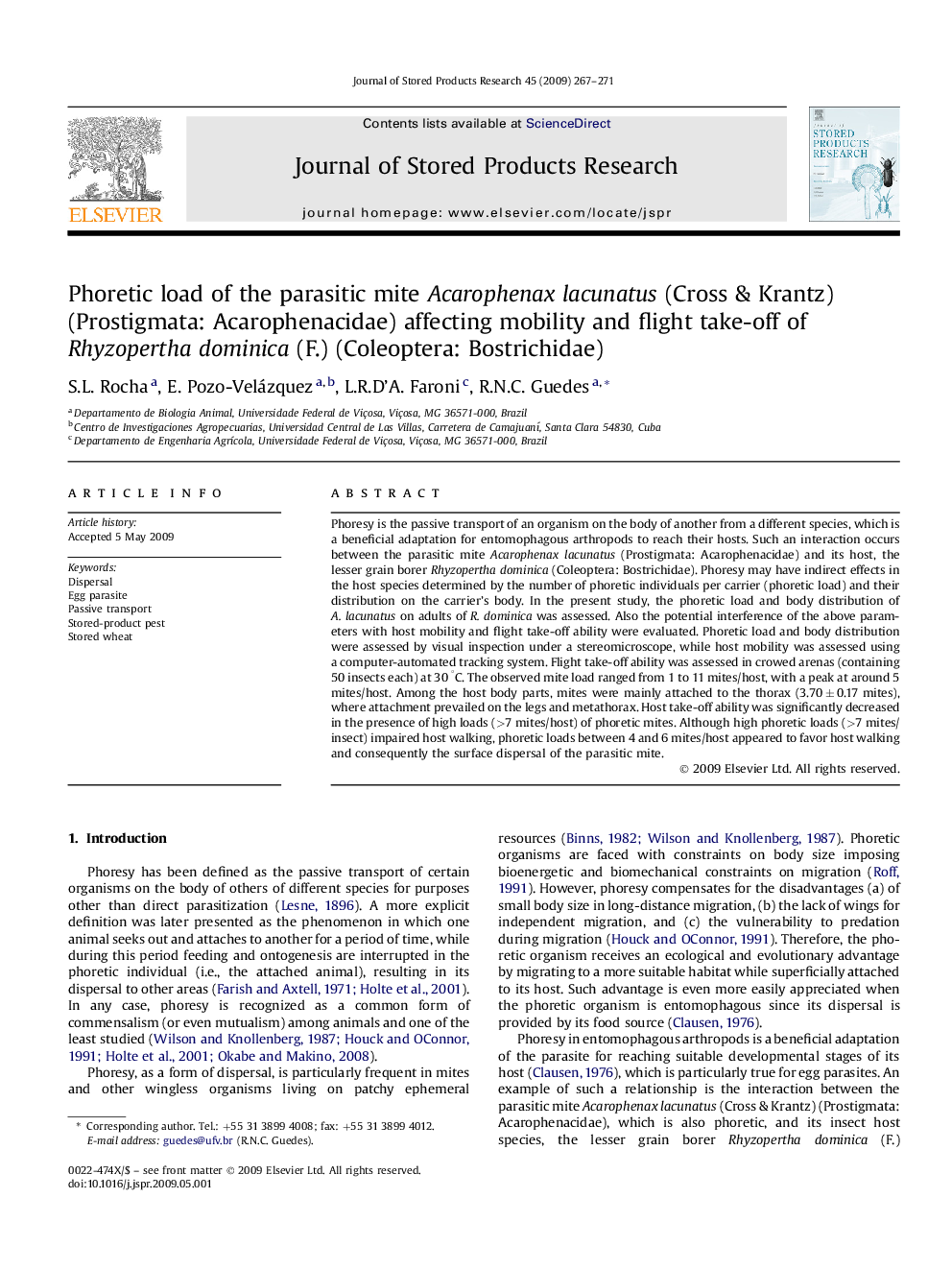| Article ID | Journal | Published Year | Pages | File Type |
|---|---|---|---|---|
| 4517331 | Journal of Stored Products Research | 2009 | 5 Pages |
Phoresy is the passive transport of an organism on the body of another from a different species, which is a beneficial adaptation for entomophagous arthropods to reach their hosts. Such an interaction occurs between the parasitic mite Acarophenax lacunatus (Prostigmata: Acarophenacidae) and its host, the lesser grain borer Rhyzopertha dominica (Coleoptera: Bostrichidae). Phoresy may have indirect effects in the host species determined by the number of phoretic individuals per carrier (phoretic load) and their distribution on the carrier's body. In the present study, the phoretic load and body distribution of A. lacunatus on adults of R. dominica was assessed. Also the potential interference of the above parameters with host mobility and flight take-off ability were evaluated. Phoretic load and body distribution were assessed by visual inspection under a stereomicroscope, while host mobility was assessed using a computer-automated tracking system. Flight take-off ability was assessed in crowed arenas (containing 50 insects each) at 30 °C. The observed mite load ranged from 1 to 11 mites/host, with a peak at around 5 mites/host. Among the host body parts, mites were mainly attached to the thorax (3.70 ± 0.17 mites), where attachment prevailed on the legs and metathorax. Host take-off ability was significantly decreased in the presence of high loads (>7 mites/host) of phoretic mites. Although high phoretic loads (>7 mites/insect) impaired host walking, phoretic loads between 4 and 6 mites/host appeared to favor host walking and consequently the surface dispersal of the parasitic mite.
